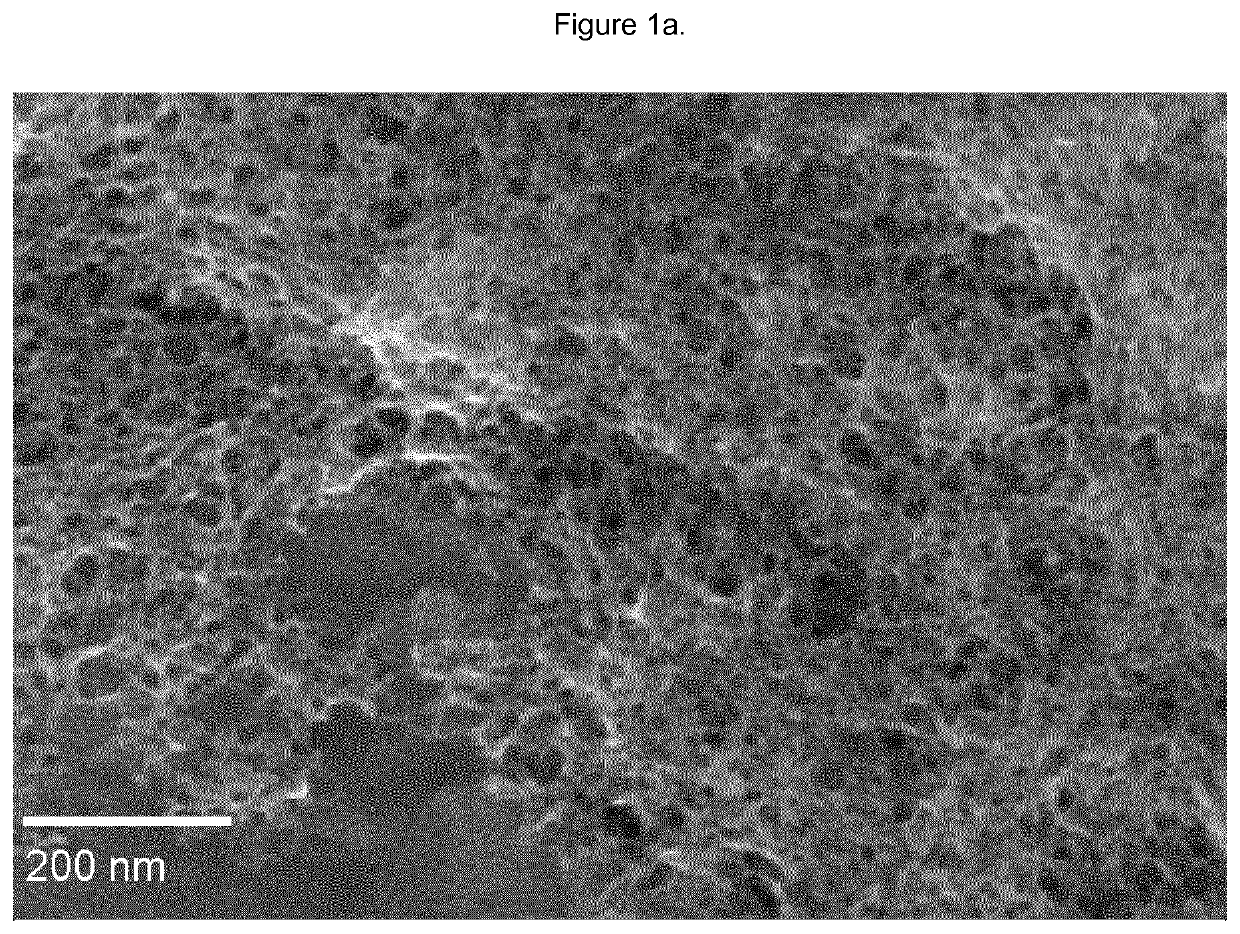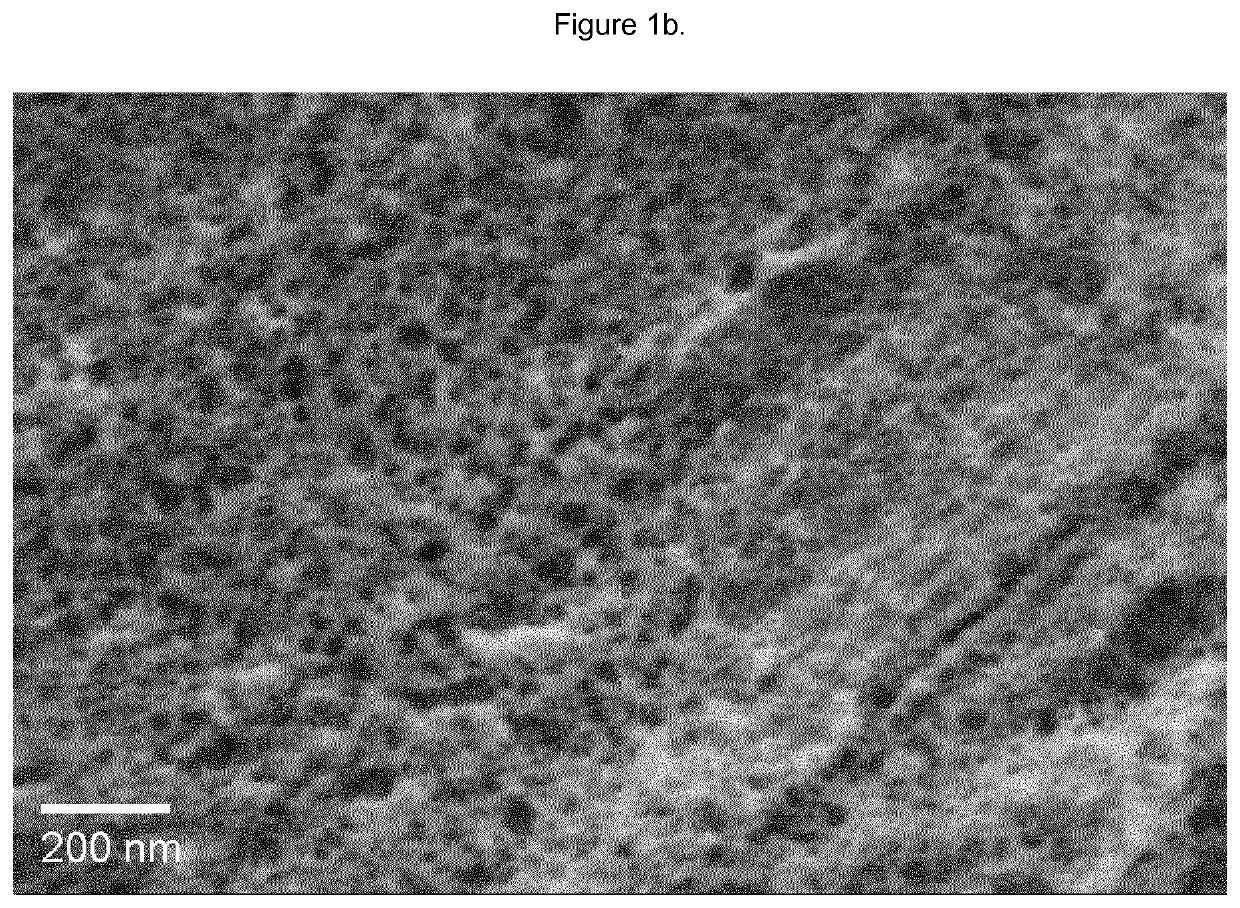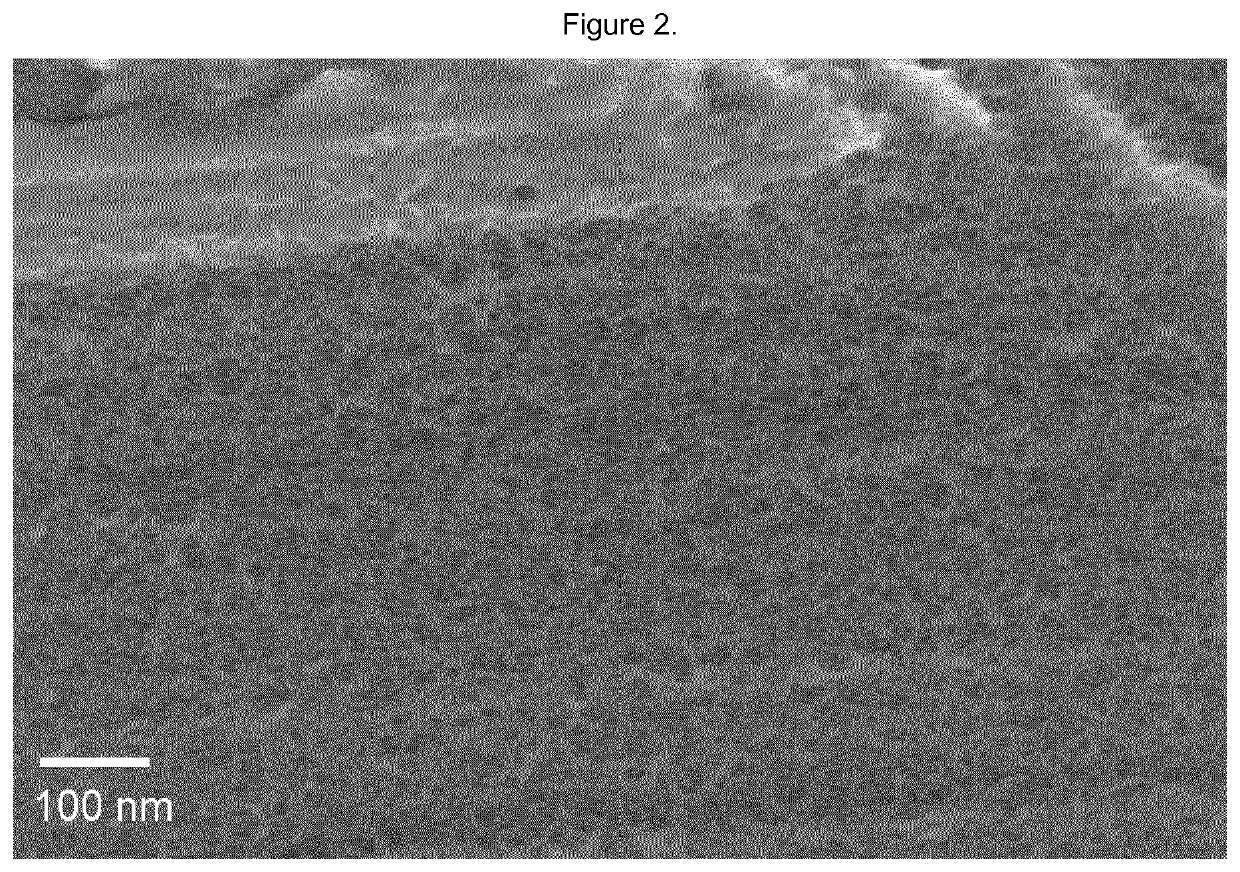Zirconium and titanium phosphate coatings for implants and other substrates
a technology of zirconium and titanium phosphate and substrate, which is applied in the field of coatings, can solve the problems of inflammatory response, low anchoring strength of implants, and greatly reduced coating efficiency, and achieve the effect of accelerating tissue integration
- Summary
- Abstract
- Description
- Claims
- Application Information
AI Technical Summary
Benefits of technology
Problems solved by technology
Method used
Image
Examples
example 1a
of a ZrP Coating Dispersion
[0119]In beaker 1 the following ingredients were mixed to form a microemulsion:[0120]17.5 g Pluronic L64 (BASF)[0121]53.75 g p-xylene (Sigma-Aldrich)[0122]3.75 g H2O[0123]0.500 g ZrCl4 (Sigma-Aldrich)
[0124]In beaker 2 the following ingredients were mixed to form a microemulsion:[0125]17.5 g Pluronic L64 (BASF)[0126]53.75 g p-xylene (Sigma-Aldrich)[0127]3.75 g H2O[0128]0.495 g H3PO4 85% (Fluke)
[0129]The contents of beaker 2 were poured into beaker 1 and the resulting mixture was placed on a magnetic stirrer for 24 hours. The resulting dispersion was translucent with a slight haze.
example 1 b
of Another ZrP Coating Dispersion
[0130]In beaker 1 the following ingredients were mixed to form a microemulsion:[0131]12.5 g Triton X-100 (Sigma-Aldrich)[0132]3.1 g 1-hexanol (Sigma-Aldrich)[0133]23.5 g cyclohexane[0134]3.40 ml H2O[0135]0.626 g ZrOCl2*8H2O
[0136]In beaker 2 the following ingredients were mixed to form a microemulsion:[0137]12.5 g Triton X-100 (Sigma-Aldrich)[0138]3.1 g 1-hexanol (Sigma-Aldrich)[0139]23.5 g cyclohexane[0140]3.40 ml H2O[0141]0.448 g H3PO4 85% (Fluke)
[0142]The contents of beaker 2 were poured into beaker 1 and the resulting mixture was placed on a magnetic stirrer for 24 hours. The resulting dispersion was semi-translucent and slightly cloudy.
example 2
n of a TiP Coating Dispersion
[0143]In beaker 1 the following ingredients were mixed to form a solution:[0144]17.5 g Pluronic L64 (BASF)[0145]53.75 g p-xylene (Sigma-Aldrich)[0146]0.500 g titanium isopropoxide (Sigma-Aldrich)
[0147]In beaker 2 the following ingredients were mixed to form a microemulsion:[0148]17.55 g Pluronic L64 (BASF)[0149]53.75 g p-xylene (Sigma-Aldrich)[0150]7.5 g H2O[0151]0.406 g H3PO4 85% (Fluke)
[0152]The contents of beaker 2 were poured into beaker 1 and the resulting mixture was placed on a magnetic stirrer for 24 hours. The resulting dispersion was translucent with a slight haze.
PUM
| Property | Measurement | Unit |
|---|---|---|
| Thickness | aaaaa | aaaaa |
| Thickness | aaaaa | aaaaa |
| Thickness | aaaaa | aaaaa |
Abstract
Description
Claims
Application Information
 Login to View More
Login to View More - R&D
- Intellectual Property
- Life Sciences
- Materials
- Tech Scout
- Unparalleled Data Quality
- Higher Quality Content
- 60% Fewer Hallucinations
Browse by: Latest US Patents, China's latest patents, Technical Efficacy Thesaurus, Application Domain, Technology Topic, Popular Technical Reports.
© 2025 PatSnap. All rights reserved.Legal|Privacy policy|Modern Slavery Act Transparency Statement|Sitemap|About US| Contact US: help@patsnap.com



